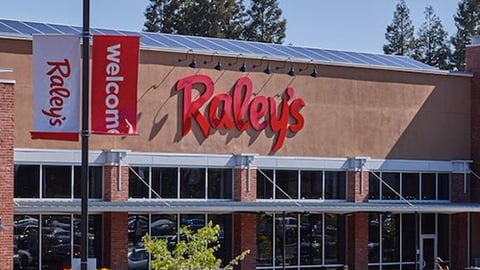Is Your Online Grocery Strategy Keeping Up with Customer Preferences?
The pace of change in the grocery sector is unprecedented and, if anything, is expected to gain velocity. Shoppers demand convenience, flexibility and instant gratification, and traditional grocers are rapidly adapting with BOPIS, delivery, fresh and curbside pickup offerings.
Online grocery continues to surge, with eMarketer predicting U.S. online food and beverage sales will grow 18.2 percent in 2019 to $19.89 billion. Meanwhile both online and historically brick-and-mortar giants increasingly target the grocery sector, including end-to-end delivery with Amazon Key for Home, Car and Garage and Walmart’s InHome Delivery, while home-delivered meal kit providers proliferate almost daily.
Of course, in any highly dynamic environment, there is significant opportunity to innovate and decisively differentiate against less savvy competitors while increasing customer engagement.
As grocers strengthen and refine their online grocery strategy in the context of the overall market, they are keenly aware of how online shopping means complete price transparency for shoppers across all their grocery provider options.
Against this backdrop, and with shopper needs evolving at a dizzying pace, knowing how to leverage AI and machine learning (ML) to give your customers relevant, highly crafted pricing and promotions is becoming more and more important. In fact, a recent Revionics-commissioned study by Forrester Consulting, "Demystifying Price and Promotion," revealed that price is the single most important factor to grocery shoppers when they are deciding where to shop.
Consumers embrace data-driven prices
Interestingly, shoppers are often ahead of retailers themselves in anticipating and embracing the idea of data science-driven pricing. Shoppers have a strong and clear sense of fairness in pricing, and as long as retailers use price and promotion optimization to craft prices within those boundaries, shoppers are very comfortable.
Another recent Revionics-commissioned study by Forrester Consulting, "Understanding Retail Customers' Pricing Expectations and Tolerances," found that an overwhelming 78 percent of shoppers think it is fair to use data science to increase and decrease prices as long as they are presented with prices they’re willing to pay.
Grocers who leverage AI get clear guidance as to which items most matter to shoppers so grocers can price more aggressively there to keep their shoppers engaged. Equally important, grocers gain clear insights into which items shoppers are less sensitive so the retailer can recover margins to sustain a healthy business without alienating customers.
Does consistent pricing make sense?
First, let’s debunk a persistent but mistaken piece of conventional wisdom, that shoppers expect and demand complete consistency between a retailer’s in-store and online pricing.
One of the Forrester studies, exploded that myth: 59 percent of the respondents said they do not expect the same price in-store and online when shopping for groceries. Unlike in many other sectors, where shoppers typically thought online prices should be lower, 38 percent of respondents expected lower prices in-store for groceries, while only 22 percent expected lower prices online, with the rest anticipating price parity.
Second, going online means that not only your shoppers but also your competitors have complete transparency into your pricing. AI capabilities are critical to gain insights into competitive elasticity so you know where you need to be aggressive in matching competition, where there is less imperative to do so, and how each competitor is predicted to respond to potential price matches you’re evaluating.
Grocers also often adapt price change cadences by channel. Online price updates generally are much less costly to manage, relying on the touch of a keyboard rather than costly in-store labor, and the transparent nature on online pricing also means retailers should structure to be more agile in price execution in that channel.
promotions and price
The types of promotional vehicles for offers also differ by channel. Defaulting to offers that are distributed electronically ignores the continuing importance of in-store offers. In fact, 31 percent of shoppers say they do not respond to online promotions, and 34 percent actively seek out promotions in the store.
AI means being able to reach the full range of your shoppers with meaningful offers in the channel they prefer and responding to demands of very comprehensive and detailed analytics that can’t be executed at the human-only scale. Fortunately AI promotion optimization delivers rapid, nuanced and highly granular recommendations, including what types of offers should be delivered in which types of vehicles and on what items in order to engage shoppers most effectively and ensure the promotions generate the desired business results.
Equally importantly, competitive multichannel grocers need to know what offers aren’t effective. Promotion performance analysis does detailed historical analysis of past promotions to identify those that yielded results in line with the business goals – as well as surfacing which ones failed to drive results or worse, created unanticipated cannibalization effects that actually have a negative impact on the business.
The dynamics of the contemporary grocery environment give U.S. grocers an unprecedented opportunity to engage and delight shoppers with innovative fresh and prepared items, the convenience of a comprehensive multichannel approach, and prices and promotions that inspire shopper loyalty while creating the foundation for a healthy, sustainable long-term business.
Grocers worldwide are increasingly adopting AI-driven price and promotion optimization capabilities to structure themselves for success







